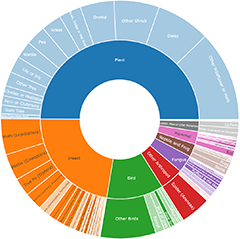Announcements
24 Sep 2025
Hi NatureMapr Data Collector app users,If you experience the following error when attempting to upload sightings from the NatureMapr Data Collector mobile app, please note the following known issue an...
Continue reading
NatureMapr moves to simpler, flatter national structure
Mobile App update and known issues
Discussion
Jennybach
wrote:
Yesterday
Thank you. I wondered about those white rims, not realising they were cilia.
Gompholobium latifolium
Tapirlord
wrote:
Yesterday
You are more than welcome to explore the ID further. Let me know what you find :).
Acacia parramattensis
Significant sightings
- Paraselina brunneri at Nightcap, NSW
- Paropsis pantherina at Broke, NSW
- Galadistes pilligaensis at The Pilliga, NSW
- Callocephalon fimbriatum at Aranda, ACT
- Daphnandra micrantha at Pappinbarra, NSW
- Litoria raniformis
- Keyacris scurra at Penrose, NSW
- Callocephalon fimbriatum at Hughes, ACT
- Perunga ochracea at Yarralumla, ACT
- Keyacris scurra at Williamsdale, NSW
Top contributors
- AlisonMilton 17.2K
- trevorpreston 16.2K
- Hejor1 15.2K
- Tapirlord 12.1K
- Mike 10.9K
- MichaelBedingfield 10.8K
- RodDeb 10.5K
- kasiaaus 9.9K
- ConBoekel 9.8K
- KylieWaldon 9.2K
Top moderators
- MichaelMulvaney 61.4K
- Tapirlord 41.8K
- MichaelBedingfield 23.8K
- Liam.m 22.4K
- donhe 18.3K
- natureguy 15.7K
- ibaird 15.6K
- MatthewFrawley 12.3K
- AlisonMilton 11.1K
- plants 9.1K


































































































![Unverified Pored or somewhat maze-like on underside [bracket polypores] at Kingsdale, NSW - Yesterday by trevorpreston Unverified Pored or somewhat maze-like on underside [bracket polypores] at Kingsdale, NSW - Yesterday by trevorpreston](https://api.naturemapr.org/api/sightings/4702926/images/1?width=300&height=300)












